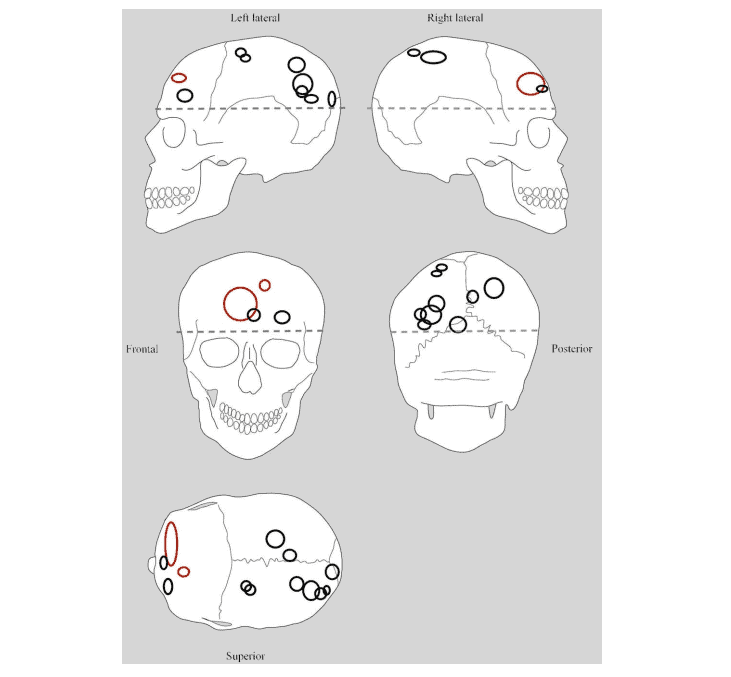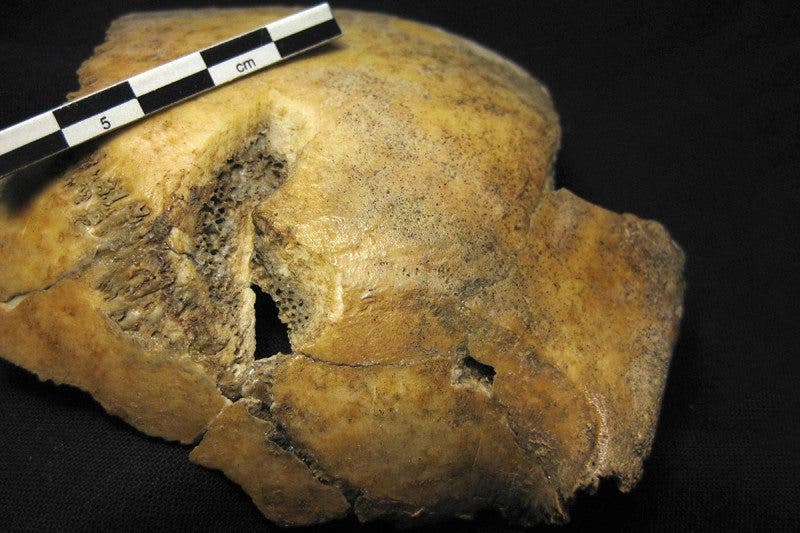Medival times could be very, very rough. I mean, we’ve all seen Game of Thrones, which is inspired by Middle Age life in England, and marveled and wept as our most beloved characters succumb to one violent death after another. Indeed, events haven’t been exaggerated. According to British researchers from the University of Oxford who dug up and assessed the 399 skulls from six London cemeteries dating from AD 1050 to 1550, head bashing was a trivial part of the common Londoner’s life.
Watch your head
Scholars argue that violence was an integral part of the medieval life which brought power to those who wield it. But it’s to be expected that, though pervasive, violence affected the different layers of society differently.
“Violence, while not necessarily barbaric and bloodthirsty, was an integral aspect of the medieval period and understanding how it functioned in society is crucial to understanding other aspects of medieval life,” the authors wrote in the American Journal of Physical Anthropology.
The team led by archaeologist Kathryn Krakowka inspected two types of cemeteries: monastic and free parish. The monastic cemeteries were typically reserved for the upper class while the free parish was used by the lay-folk.
In total, a staggering 6.8 percent all the skulls she and colleagues examined presented evidence of some violence-related trauma. Particularly, it was males aged 26 to 35 that were most affected during a time when life expectancy was 31-33 years but a man who had reached 20 already could hope to live to 45. Around a quarter of the trauma examined occurred around the time of death suggesting the people commonly died as a result of violence. Sharp force (SFT), projectile, and puncture trauma was assessed.

Approximate size and location of all blunt force lesions that are possibly indicative of violence. Credit: University of Oxford.
The difference between the upper class and lower class cemeteries was evident. While in some monastic cemeteries only 2.4 percent of the skulls had marks of trauma, in others like St. Mary Graces up to 11.8 percent of the skulls bore trauma-related signs.
Happy hour headbanging
That seems like a lot even for medieval standards. New Scientist reported that elsewhere around the time, in two cemeteries in York, only 2.4 and 3.6 per cent of skulls had fractures. This suggests that London was a particularly violent place, likely the roughest in the country — if not the world.
Because there seems to be a clear class-related discrepancy in the incidence of head trauma, Krakowka and colleagues reckon the lower class was more prone to informally resolving their disputes. The upper class, on the other hand, would have access to the legal system of the time — developing and rather lacking but a legal system nonetheless.
Since the poor couldn’t afford legal counsel, civil arguments often ended with a bashed one or a couple. Of course, alcohol has always played a rule in fueling violence. According to coroners’ reports from the time (something amazing in itself that we still have access to them half a thousand years later) suggest a disproportionate amount of homicides occurred on Sundays and Monday mornings. Not coincidentally, these were the tavern happy hours.










